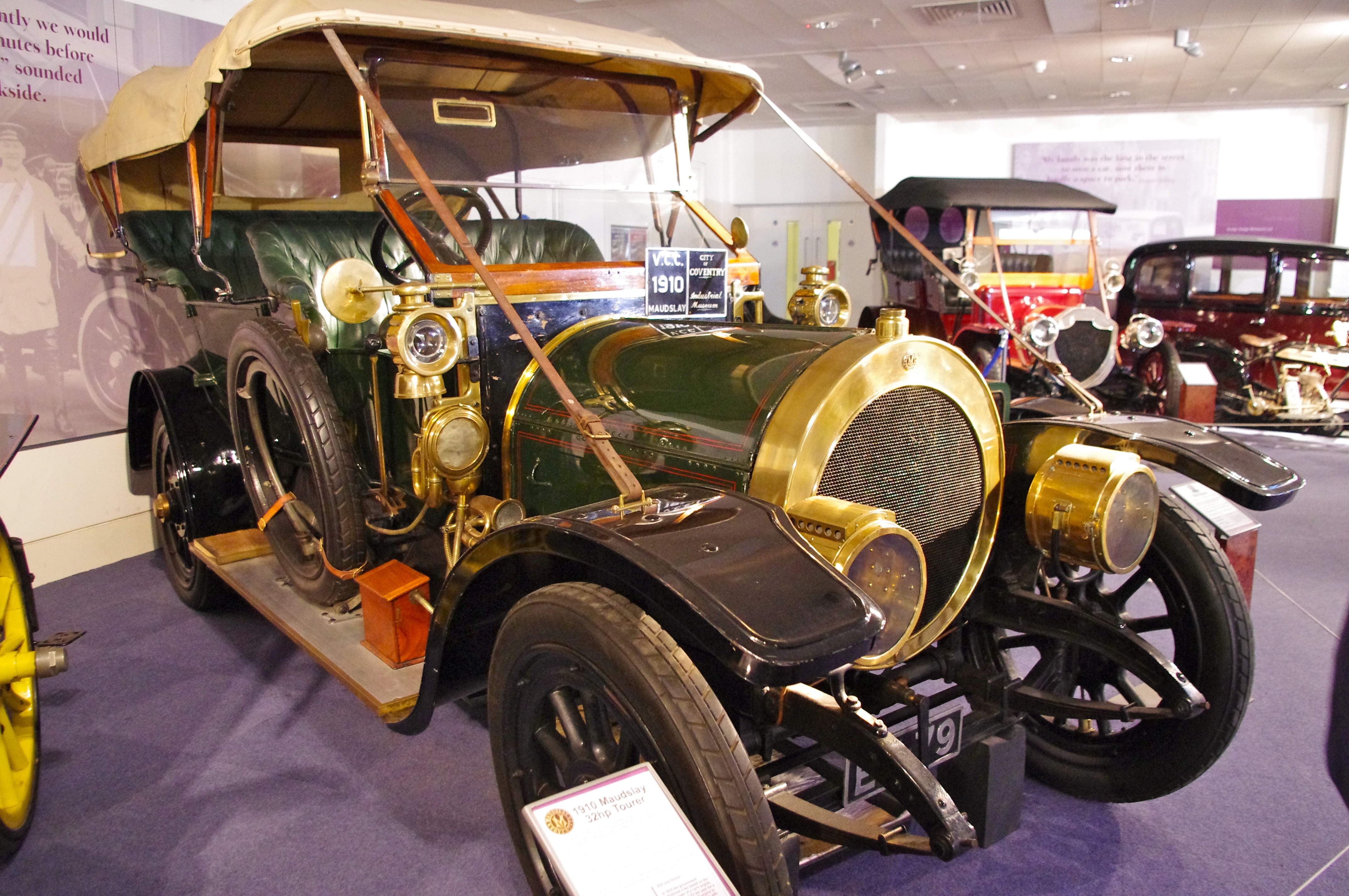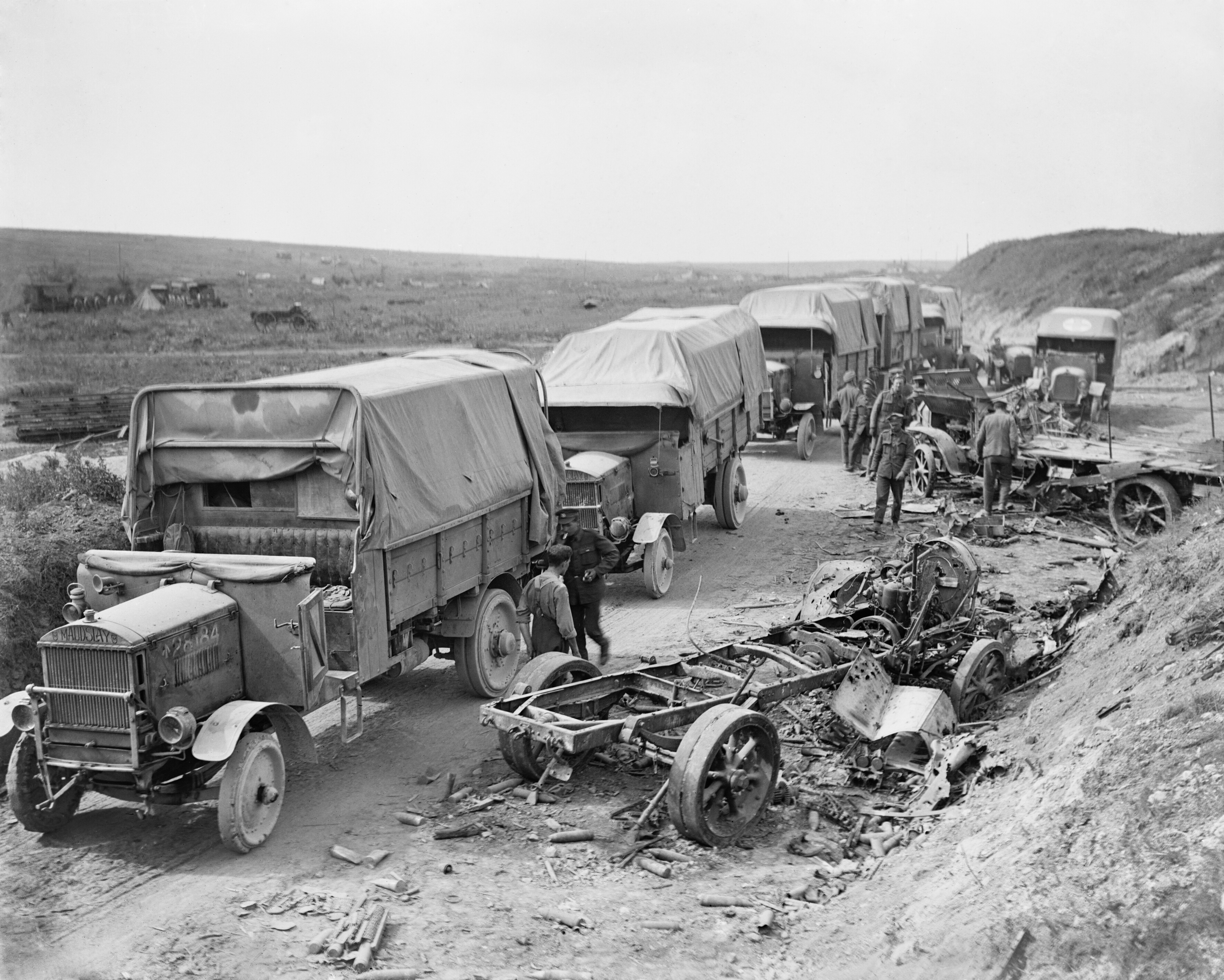Maudslay Motor Company on:
[Wikipedia]
[Google]
[Amazon]

 The Maudslay Motor Company was a British vehicle maker based in Coventry. It was founded in 1902 and continued until 1948 when it was taken over by the
The Maudslay Motor Company was a British vehicle maker based in Coventry. It was founded in 1902 and continued until 1948 when it was taken over by the
 The engines did not sell very well, and in 1902 they made their first engine intended for a car which was fitted to chain-drive chassis. The three-cylinder engine, designed by Alexander Craig, was an advanced unit with a single overhead camshaft and pressure lubrication. In 1902, Maudslay Motors made a petrol railway locomotive for City of London Corporation to draw trucks from the
The engines did not sell very well, and in 1902 they made their first engine intended for a car which was fitted to chain-drive chassis. The three-cylinder engine, designed by Alexander Craig, was an advanced unit with a single overhead camshaft and pressure lubrication. In 1902, Maudslay Motors made a petrol railway locomotive for City of London Corporation to draw trucks from the
 Private car production stopped with the outbreak of war. Five- and six-ton lorries had been supplied to the British War Office in 1913, and these, along with a three-ton model, became the main product during hostilities. In addition, aircraft undercarriages were made, as well as reconditioning work carried out on radial engines. Production of complete engines was started in 1918.
Private car production stopped with the outbreak of war. Five- and six-ton lorries had been supplied to the British War Office in 1913, and these, along with a three-ton model, became the main product during hostilities. In addition, aircraft undercarriages were made, as well as reconditioning work carried out on radial engines. Production of complete engines was started in 1918.

 The Maudslay Motor Company was a British vehicle maker based in Coventry. It was founded in 1902 and continued until 1948 when it was taken over by the
The Maudslay Motor Company was a British vehicle maker based in Coventry. It was founded in 1902 and continued until 1948 when it was taken over by the Associated Equipment Company
Associated Equipment Company (AEC) was a British vehicle manufacturer that built buses, motorcoaches and trucks from 1912 until 1979. The name Associated Equipment Company was hardly ever used; instead it traded under the AEC and ACLO brands. ...
(AEC) and along with Crossley Motors
Crossley Motors was an English motor vehicle manufacturer based in Manchester, England. It produced approximately 19,000 cars from 1904 until 1938, 5,500 buses from 1926 until 1958, and 21,000 goods and military vehicles from 1914 to ...
the new group was renamed Associated Commercial Vehicles (ACV) Ltd.
Early history
The company was founded by Cyril Charles Maudslay, great grandson of the eminent engineerHenry Maudslay
Henry Maudslay ( pronunciation and spelling) (22 August 1771 – 14 February 1831) was an English machine tool innovator, tool and die maker, and inventor. He is considered a founding father of machine tool technology. His inventions were ...
to make marine internal combustion engines. He was joined by his cousin Reginald Walter Maudslay who soon left to found the Standard Motor Company
The Standard Motor Company Limited was a motor vehicle manufacturer, founded in Coventry, England, in 1903 by Reginald Walter Maudslay. For many years, it manufactured Ferguson TE20 tractors powered by its Vanguard engine. All Standard's tract ...
.
 The engines did not sell very well, and in 1902 they made their first engine intended for a car which was fitted to chain-drive chassis. The three-cylinder engine, designed by Alexander Craig, was an advanced unit with a single overhead camshaft and pressure lubrication. In 1902, Maudslay Motors made a petrol railway locomotive for City of London Corporation to draw trucks from the
The engines did not sell very well, and in 1902 they made their first engine intended for a car which was fitted to chain-drive chassis. The three-cylinder engine, designed by Alexander Craig, was an advanced unit with a single overhead camshaft and pressure lubrication. In 1902, Maudslay Motors made a petrol railway locomotive for City of London Corporation to draw trucks from the London, Brighton and South Coast Railway
The London, Brighton and South Coast Railway (LB&SCR; known also as the Brighton line, the Brighton Railway or the Brighton) was a railway company in the United Kingdom from 1846 to 1922. Its territory formed a rough triangle, with London at its ...
to the Corporation meat market at Deptford, this requiring 50 tons to be drawn up a gradient of 1 in 36. It was fitted with a three-cylinder engine developing 85 bhp at 450 rpm, with cylinders of 9inch bore and stroke. Transmission was via a 2-speed change gear. The locomotive weighed 12 tons, and was provided with an 8 hp auxiliary engine which was used to start the main engine. This was the first commercially successful petrol locomotive in the world.
The three-cylinder engine was followed in 1903 by a six-cylinder version, possibly the first overhead-camshaft six to go into production. For 1904 a range of cars was on offer, including one with a 9.6-litre version of the six-cylinder engine. The cars were among the most expensive on the British market.
As well as cars the company made commercial vehicles with the first double decker bus produced in 1905 and a range of trucks varying from small two-cylinder models to six ton models. In 1912 Maudslay supplied a engine to power an early petrol-electric railcar.
A side-valve engine was introduced in 1914.
World War I
 Private car production stopped with the outbreak of war. Five- and six-ton lorries had been supplied to the British War Office in 1913, and these, along with a three-ton model, became the main product during hostilities. In addition, aircraft undercarriages were made, as well as reconditioning work carried out on radial engines. Production of complete engines was started in 1918.
Private car production stopped with the outbreak of war. Five- and six-ton lorries had been supplied to the British War Office in 1913, and these, along with a three-ton model, became the main product during hostilities. In addition, aircraft undercarriages were made, as well as reconditioning work carried out on radial engines. Production of complete engines was started in 1918.
Inter-War Years
Despite the advent of peace in 1918, private car building was not resumed, apart from a solitary example of an advanced sports car, shown at the 1923 London Motor Show. Heavy goods vehicles were the main line and some were modified for passenger carrying. A breakthrough came in 1924, when a low-level coach chassis was introduced. A significant product was the SF40 front-engined coach chassis, with set-back front axle, which came onto the market in 1934. It achieved quite successful sales figures until the advent of World War II.World War II and after
All civilian vehicle production stopped in 1939, and the company turned out general service vehicles, tank and aircraft components. In 1941, virtually all production was transferred to a new works at Great Alne, nearAlcester
Alcester () is a market town and civil parish of Roman origin at the junction of the River Alne and River Arrow in the Stratford-on-Avon District in Warwickshire, England, approximately west of Stratford-upon-Avon, and 7 miles south of Reddit ...
to escape air raids.
However, some production remained in Coventry, and when the factory was bombed in the Coventry Blitz
The Coventry Blitz ( blitz: from the German word ''Blitzkrieg'' meaning "lightning war" ) or Coventration of the city was a series of bombing raids that took place on the British city of Coventry. The city was bombed many times during the Sec ...
several people were killed there.
The Great Alne works would be known as Castle Maudslay. Automotive production remains at this site for many years. During the 1990s brakes and axles for automotive manufactures like Volvo
The Volvo Group ( sv, Volvokoncernen; legally Aktiebolaget Volvo, shortened to AB Volvo, stylized as VOLVO) is a Swedish multinational manufacturing corporation headquartered in Gothenburg. While its core activity is the production, distributio ...
and Renault
Groupe Renault ( , , , also known as the Renault Group in English; legally Renault S.A.) is a French multinational automobile manufacturer established in 1899. The company produces a range of cars and vans, and in the past has manufactured ...
heavy vehicles were produced there, and ArvinMeritor
Meritor, Inc. is an American corporation headquartered in Troy, Michigan, which manufactures automobile components for military suppliers, trucks, and trailers. Meritor is a Fortune 500 company.
In 1997, Rockwell International spun off its au ...
, the company that once owned the Castle Maudslay site, maintained a small office and manufacturing facility there until the site was eventually demolished and is due to become 'Maudslay Park', a housing development (correct at 2014).
A completely new range of heavy vehicles with 4, 6 and 8 wheel chassis as well as luxury coaches was introduced. Castle Maudslay at Alcester would make components, and these would be taken to the Parkside, Coventry works for vehicle assembly.
Merger
In 1948, Maudslay joined AEC and Crossley in the new Associated Commercial Vehicles (ACV) Ltd. The name was kept on at first, but in 1950 it was phased out. The Maudslay plants continued to assemble AEC-designed models in the 1950s and there were some badge-engineered Maudslays to give AEC extra space at Motor Shows. After the formation of Leyland Motor Corporation the Castle Maudlsay plant produced axles; Rockwell bought it in the late 1970s. In 1942, three of Henry Maudslay's grandsons commemorated their grandfather's name by forming the Maudslay Society, an organisation to encourage young engineerSee also
*List of car manufacturers of the United Kingdom
:''This list is incomplete. You can help by adding correctly sourced information about other manufacturers.''
As of 2018 there are approximately 35 active British car manufacturers and over 500 defunct British car manufacturers. This page lists ...
References
External links
{{Automotive industry in the United Kingdom Defunct motor vehicle manufacturers of England Defunct bus manufacturers of the United Kingdom Defunct truck manufacturers of the United Kingdom Coventry motor companies